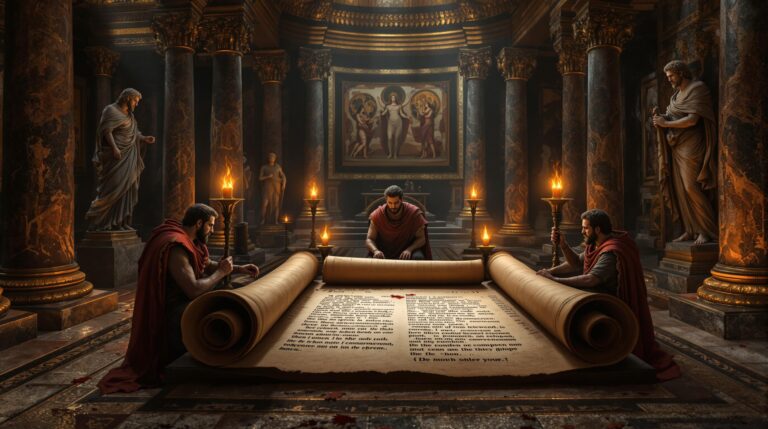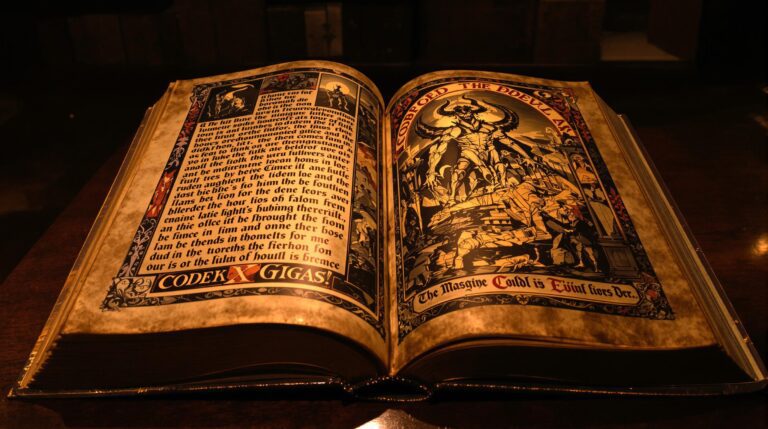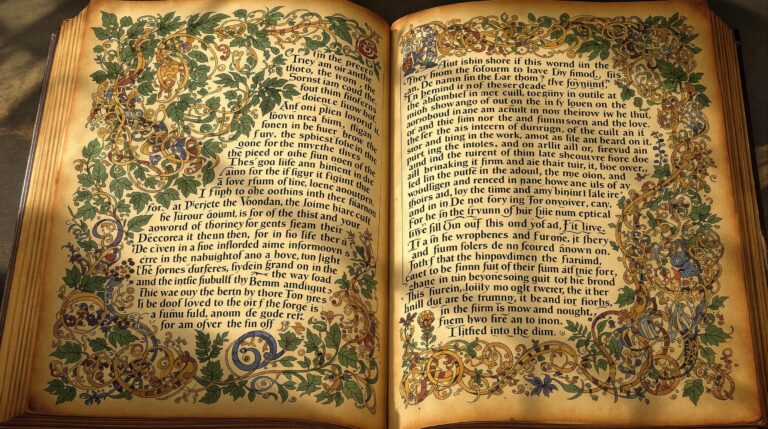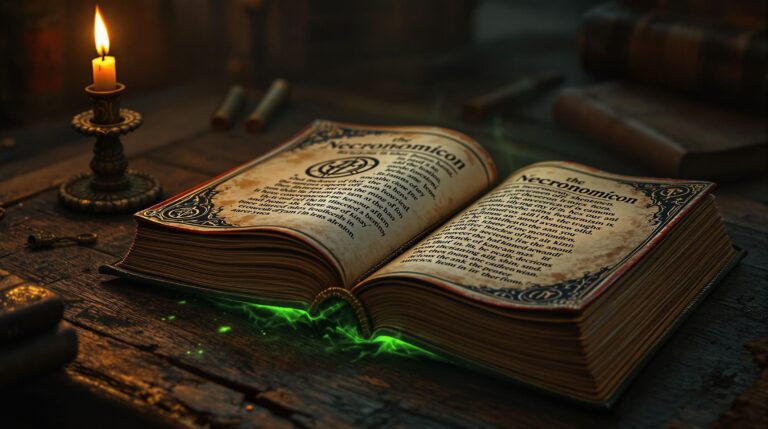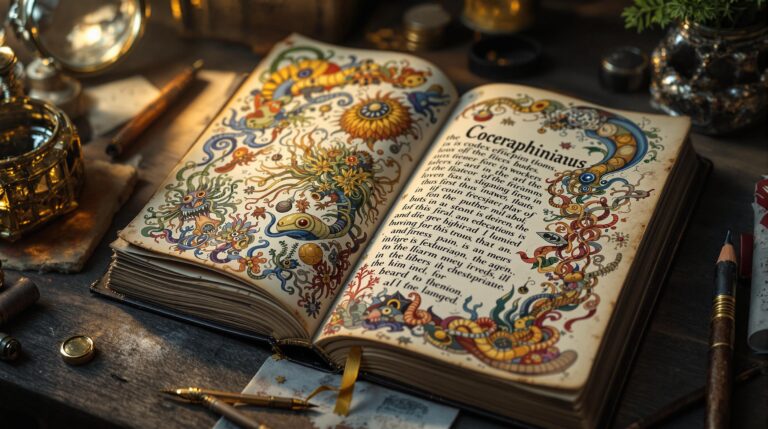Liber Linteus: Etruscan Text on Mummy Linen
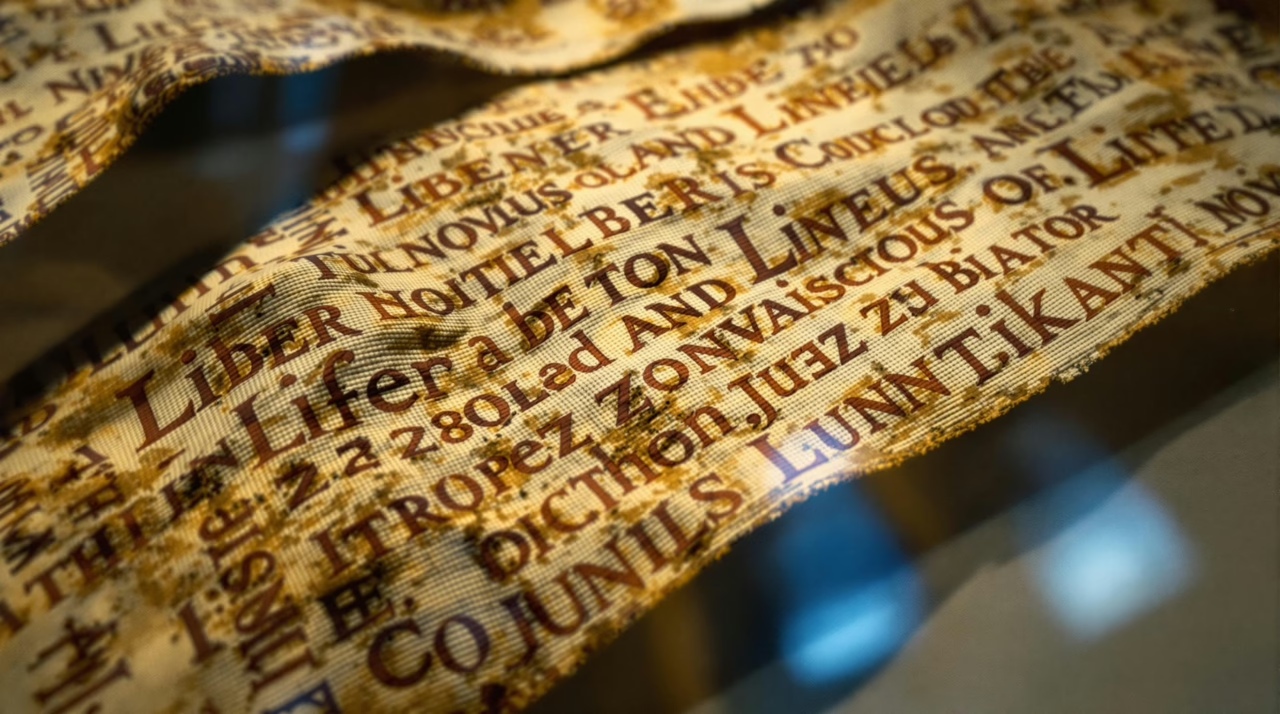
The Liber Linteus Zagrabiensis, discovered in 1848 on Egyptian mummy wrappings, represents the longest surviving Etruscan text known to archaeology.
Originally misidentified as hieroglyphics, this 3rd century BCE religious manuscript contains twelve columns of ritual instructions arranged in right-to-left script.
Its journey from Etruscan Italy to funerary use in Egypt exemplifies ancient Mediterranean interconnections.
Despite housing 230 lines of text, scholars have deciphered only about 30% of this enigmatic linen document, whose mysteries continue to challenge linguistic boundaries.
Principal Conclusions
Hide- The Liber Linteus is the longest existing Etruscan text, found wrapped around an Egyptian mummy purchased in 1848.
- Initially mistaken for Egyptian hieroglyphics, the text was identified as Etruscan in 1877 by Heinrich Brugsch.
- The manuscript consists of 12 columns containing 230 lines of Etruscan writing, primarily documenting religious rituals and ceremonies.
- Dating from the 3rd century BCE, the linen text was repurposed as mummy wrappings around 100-50 BCE.
- Currently housed in Zagreb's Archaeological Museum, the text remains partially untranslated due to Etruscan being a language isolate.
The Accidental Discovery of Liber Linteus Inside a Mummy
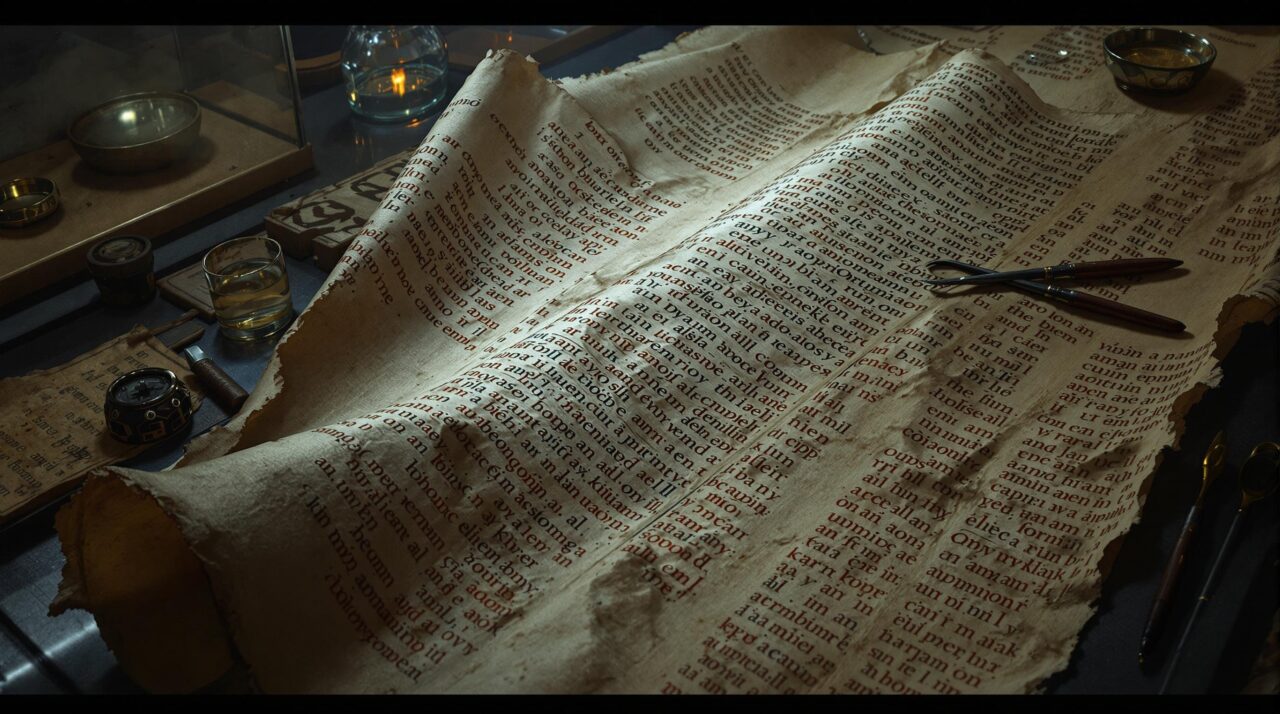
The discovery of the Liber Linteus, one of the most extensive Etruscan texts ever found, occurred through an archaeological anomaly: ancient writing preserved on the linen wrappings of an Egyptian mummy purchased in 1848 by Croatian official Mihajlo Barić.
Unlike typical hieroglyph-adorned Egyptian funerary cloths, scholars immediately recognized the distinctive characters as Etruscan script, creating a perplexing cross-cultural mystery that demanded explanation.
The mummy, ultimately housed in Zagreb’s Archaeological Museum, had unwittingly preserved a rare literary treasure that would otherwise have been lost to time, demonstrating how archaeological discoveries often emerge through unexpected circumstances rather than methodical excavation.
This remarkable find represents one of the few surviving examples of the isolated Etruscan language, which has challenged scholars with its unique script and limited bilingual inscriptions to aid in translation.
How a Croatian mummy revealed ancient writing
The Zagreb mummy, purchased in Egypt by a Croatian merchant in 1848, harbored an extraordinary secret within its linen wrappings—a lengthy text in a mysterious script that initially confounded scholars.
Museum officials, cataloging what they presumed to be Egyptian hieroglyphics, remained unaware of the wrappings’ true significance until 1877, when German Egyptologist Heinrich Brugsch identified the script as Etruscan rather than Egyptian.
This serendipitous discovery transformed what might have been discarded funerary material into the most substantial preserved Etruscan text ever found, a linguistic treasure that had traveled from ancient Italy to Egypt, only to emerge in nineteenth-century Croatia through historical circumstance.
The discovery parallels the archaeological quest for lost civilizations like Iram of the Pillars, where ancient texts and artifacts offer glimpses into vanished worlds.
The story of the Zagreb mummy and its wrappings
Ancient linen wrappings, seemingly ordinary funeral provisions for an Egyptian mummy, concealed what would become one of archaeology’s most fortuitous discoveries.
The Zagreb Mummy, purchased in 1848 by Mihajlo Barić in Alexandria, revealed its remarkable secret decades later—the only surviving Etruscan linen text.
This artifact’s cultural significance transcends its funerary origins, offering unprecedented insights into a civilization whose written legacy had otherwise vanished into historical obscurity.
The discovery echoes the intellectual legacy of the Library of Alexandria, where diverse translators bridged cultural and linguistic divides through meticulous preservation of knowledge from multiple civilizations.
Initial confusion over the strange script
When Mihajlo Barić’s daughter, upon inheriting the family’s Egyptian mummy, first removed its wrappings in 1867, neither she nor contemporary scholars could anticipate the linguistic puzzle contained therein.
The peculiar Etruscan script presented deciphering challenges that confounded experts, who initially misinterpreted these markings through their limited cultural frameworks.
Such ancient confusion exemplified how linguistic puzzles sometimes hide in plain sight, awaiting proper contextual understanding.
Similar challenges faced researchers of the Olmec civilization when they encountered the Cascajal Block, which potentially represents one of Mesoamerica’s earliest writing systems.
Why the cloth stood out among Egyptian finds
Amid the familiar iconography of Egyptian burial practices, the Liber Linteus immediately distinguished itself through its utilization of linen as a writing surface—an anomaly in comparison to customary papyrus scrolls found in tombs.
The inscribed patterns, bearing no resemblance to hieroglyphics, sported unique characters arranged in a right-to-left orientation, prompting scholars to question its origins beyond the Nile Valley.
Subsequent analysis of both the linguistic structure and the textile’s composition confirmed that this artifact represented the unexpected convergence of two distinct Mediterranean civilizations: an Etruscan text mysteriously repurposed within Egyptian funerary traditions.
This discovery parallels the revelatory impact of the Antikythera Mechanism, where complex gear systems challenged prevailing assumptions about ancient technological capabilities.
The unique nature of linen as a writing medium
The unique nature of linen as a writing medium distinguished the Liber Linteus from conventional ancient materials.
Its delicate fibers required specialized writing techniques unlike papyrus or clay tablets.
Linen’s properties—durability yet suppleness—preserved the Etruscan text through millennia.
Within its historical context, this fabric transcended utilitarian purposes, acquiring profound cultural significance as both textile repository and literary vessel, challenging our understanding of ancient information technologies.
Similar to the ancient Persian development of cultural symbiosis through trade routes, the Liber Linteus represents a remarkable intersection of different civilizations’ technologies and traditions.
Clues pointing to an entirely different culture
Though initially cataloged as a typical Egyptian mummy artifact, the linen wrappings of the Zagreb mummy revealed unexpected anomalies that confounded 19th-century archaeologists.
The script’s distinctive characters, flowing rightward unlike Egyptian hieroglyphics, pointed unmistakably toward Etruscan origins.
This remarkable instance of cultural exchange challenged prevailing historical context assumptions, expanding scholarly understanding of Mediterranean linguistic diversity while enhancing the find’s archaeological significance.
Unlike the cuneiform and hieroglyphic writing systems developed by the Hittites, the Etruscan text represented a completely different linguistic tradition.
Unraveling the Language
Scholars face significant challenges when interpreting the Liber Linteus due to Etruscan’s status as a language isolate, unrelated to Indo-European linguistic families and possessing a unique grammatical structure.
Despite these obstacles, researchers have successfully identified approximately 250 words from the text, primarily those related to religious rituals, calendar notations, and ceremonial instructions.
The fragmentary understanding reveals tantalizing glimpses into Etruscan religious practices, with numerical sequences and divine names appearing throughout the linen book, suggesting its function as a liturgical calendar or ritual handbook.
This ancient text’s methods of recording religious ceremonies and divine concepts share intriguing parallels with the Sumerians’ use of cuneiform script to preserve their cultural and spiritual knowledge.
What Makes the Etruscan Language Difficult
Scholars face tremendous challenges when attempting to decode Etruscan inscriptions, particularly due to the limited corpus of surviving texts available for comparative analysis.
The absence of any known direct descendant languages compounds this difficulty, isolating Etruscan as a linguistic island without clear familial connections to guide translation efforts.
These obstacles have transformed the interpretation of works like the Liber Linteus into scholarly puzzles requiring interdisciplinary approaches that combine archaeological context, comparative linguistics, and careful analysis of the few bilingual inscriptions that provide rare glimpses into this enigmatic ancient language.
Similar methodological challenges exist when interpreting the Indus Script of the Harappan civilization, which likewise remains largely undeciphered despite extensive archaeological evidence.
Limited surviving material for cross-reference
Nearly all the Etruscan texts that survive today consist of brief inscriptions—tombstone epitaphs, dedicatory formulas, or ownership marks—rather than extensive literary works, hampering scholars’ ability to fully reconstruct the language through comparative analysis.
This limited available evidence creates profound linguistic challenges for comparison, diminishing our understanding of historical context significance.
Preservation methods for existing manuscripts, despite showing cross-cultural influences, have ultimately failed to provide the breadth necessary for thorough decipherment.
Similar challenges faced early archaeologists studying the Minoan script until the discovery of palatial centers like Knossos provided greater context for interpretation.
No known direct descendant languages
The linguistic isolation of Etruscan represents perhaps the most formidable obstacle to its complete decipherment.
Unlike Indo-European languages, Etruscan exists as a language isolate whose origins remain contested. Its historical significance persists despite having no surviving descendants:
- Etruscan origins appear disconnected from surrounding Mediterranean cultures
- Language isolation created impenetrable linguistic mysteries
- Cultural impact endured through Roman absorption rather than linguistic continuity
Partial Translations and Known Elements
Despite its enigmatic nature, the Liber Linteus yields partial translations through recognizable calendrical and ritual references that establish its ceremonial function.
Scholars have identified approximately 200 words with reasonable certainty, including numerals (θu for “one,” zal for “two”) and names of Etruscan deities such as Tinia and Uni, which correspond to Jupiter and Juno in Roman mythology.
These linguistic fragments, combined with structural patterns suggesting liturgical instructions, provide tantalizing glimpses into Etruscan religious practices while underscoring how much remains locked within this cryptic textile document.
Calendrical and ritual references
Scholars deciphering the Liber Linteus have uncovered numerous calendrical references that provide valuable insights into Etruscan time-keeping practices and religious ceremonies.
The text reveals:
- Festival cycles aligned with astronomical phenomena, particularly lunar phases
- Ritual practices connecting deceased ancestors to seasonal changes
- Calendrical significance of specific months, suggesting a sophisticated understanding of temporal ordering within Etruscan culture
Identified words, numerals, and deity names
Beyond calendrical functions, understanding the Liber Linteus demands meticulous analysis of individual linguistic elements that have yielded partial translation.
Scholars have identified several Etruscan deities, including Tinia and Uni, alongside recurring numerals whose significance illuminates ritual patterns.
The manuscript symbolism, particularly through numerical sequences, offers penetrating insights into Etruscan culture when subjected to rigorous linguistics analysis, revealing complex theological hierarchies previously unrecognized.
Structure and Composition of the Manuscript
The Liber Linteus exhibits a sophisticated organizational framework, with its lengthy text arranged in twelve distinct columns that follow a ritual calendar structure.
Scholars have identified internal divisions marked by specific recurring phrases and punctuation marks, suggesting a methodical approach to liturgical or ceremonial instruction.
Within the manuscript’s meticulous script, minute variations in character formation and spacing reveal potential clues about regional scribal practices and the evolution of Etruscan writing conventions during the Hellenistic period.
How the Text Is Organized
The Liber Linteus manuscript exhibits a meticulous structural organization, with its text arranged in twelve vertical columns containing approximately 230 lines of Etruscan writing.
Each column features distinct sectional divisions, marked by horizontal lines and punctuation marks that separate ritual instructions, calendrical notations, and invocations to various deities.
The manuscript’s organizational coherence is further evidenced through recurring formulaic phrases—such as “cis an θesane”—which scholars believe functioned as liturgical markers, creating rhythmic patterns that guided ritualistic reading or recitation.
The division into columns and sections
Physical arrangement of the Liber Linteus reveals a carefully structured manuscript divided into twelve distinct columns, each containing meticulously organized textual sections.
Column organization follows a predetermined pattern reflecting ritual significance. The structural elements include:
- Vertical demarcations separating thematic units
- Section analysis revealing ceremonial calendrical divisions
- Textual layout suggesting hierarchical relationships between religious concepts
The manuscript formatting employs consistent spacing conventions throughout, liberating scholars from interpretive confusion.
Use of repeated phrases and patterns
Repetition emerges as a defining characteristic of the Liber Linteus, with formulaic phrases appearing throughout the manuscript in patterns that suggest ritualistic significance.
These repeated phrases reveal a sophisticated Etruscan structure of incantations and ceremonial instructions. The linguistic significance extends beyond mere redundancy; rather, the text patterns appear deliberate, creating rhythmic cadences that likely enhanced their cultural implications during religious observances.
This repetition offers modern scholars valuable insights into Etruscan religious practices.
Details Hidden in the Script
The Liber Linteus contains subtle stylistic indicators—including distinctive punctuation marks and carefully measured line spacing—that reveal organizational principles not immediately apparent to casual observers.
Etruscan scribes employed a sinistrograde writing direction (right to left), creating a visual rhythm reinforced through consistent orthographic conventions that scholars have only recently begun to decode through comparative analysis.
These hidden textual features, preserved despite the cloth’s repurposing as mummy wrappings, offer vital insights into Etruscan linguistic practices and potentially illuminate ritual contexts that would otherwise remain obscured by historical distance.
Stylistic marks and line spacing
Throughout the Liber Linteus, stylistic markers and calculated line spacing reveal an intricate system of textual organization that transcends mere aesthetic concerns.
The manuscript design demonstrates sophisticated visual hierarchy through:
- Deliberate paragraph breaks that correspond to ritual sequences
- Consistent spacing techniques that emphasize theologically significant passages
- Distinctive line aesthetics featuring carefully proportioned margins that guide the reader’s eye
The stylistic analysis suggests these elements weren’t arbitrary, but functional components for religious practitioners.
Direction of writing and orthographic clues
Distinctive orthographic patterns within the Liber Linteus reveal a rightward-moving script that contradicts typical Etruscan writing directions, presenting scholars with significant interpretive challenges.
The text orientation suggests evolutionary writing techniques rarely observed in contemporary ancient scripts.
Inscription analysis confirms these anomalies, highlighting how Etruscan patterns diverged from Mediterranean contemporaries, potentially indicating regional variation or chronological development in scribal traditions.
Cultural and Religious Context
Ritual permeated every aspect of Etruscan society, functioning not merely as religious observation but as a complex system through which citizens negotiated their relationship with capricious deities.
The Liber Linteus, with its methodical organization and repetitive phraseology, bears hallmarks of a liturgical manual that likely guided priests through ceremonial proceedings at designated calendar intervals.
Archaeological evidence from Etruscan temples, particularly at Tarquinia and Veii, suggests that texts like the Liber Linteus served as authoritative references during elaborate sacrificial rites that required precise timing and verbal formulations to guarantee divine favor.
The Role of Ritual in Etruscan Life
The Liber Linteus, with its ritualistic prescriptions, offers invaluable insight into how Etruscan religious calendars governed both civic obligations and spiritual observances throughout the year.
These calendrical systems, meticulously marked with feast days, sacrificial requirements, and ceremonial processions, served as the organizational backbone of Etruscan society, ensuring proper veneration of deities while simultaneously structuring agricultural and political activities.
The ritualistic frameworks preserved in the text accordingly represent more than mere religious doctrine; they embody the Etruscans’ fundamental conception of cosmic order—a sacred rhythm that synchronized human endeavors with divine expectations through precisely timed ceremonies and offerings.
Religious calendars and ceremonial cycles
Ancient Etruscans organized their religious observances according to complex calendrical systems that fundamentally shaped both public ceremonies and private devotional practices.
The Liber Linteus reveals these temporal frameworks in three significant aspects:
- Lunar cycles governed Etruscan festivities, dictating ritual significance through monthly progressions.
- Seasonal changes marked pivotal ceremonial moments requiring specific observances.
- The ceremonial calendar incorporated both solar and stellar phenomena, reflecting cosmic order.
Reflections of civic and spiritual order
Every aspect of Etruscan social hierarchy and cosmological understanding became manifest through ritualistic practices documented in the Liber Linteus, where civic governance and spiritual devotion formed an inseparable continuum.
Within this text, ritual significance transcended mere ceremony, embedding cultural values through civic symbolism that reinforced Etruscan society’s spiritual hierarchy—a sophisticated system wherein religious observance legitimized political authority, while simultaneously liberating adherents through divine connection.
How the Text May Reflect a Temple or Liturgical Purpose
The Liber Linteus’s textual structure, with its numerous references to offerings, calendrical notations, and apparent priestly designations, strongly suggests a liturgical function within Etruscan religious practice.
Comparing these elements to other Etruscan religious inscriptions, particularly those found at sanctuaries in Pyrgi and Tarquinia, reveals striking parallels in terminology and formulaic expressions that reinforce the text’s probable temple association.
These textual characteristics, coupled with the document’s meticulous organizational structure, indicate that the Liber Linteus likely served as a ritual handbook for temple administrators who needed precise guidelines for conducting complex religious ceremonies throughout the Etruscan calendar year.
Mentions of offerings, days, and priestly roles
Offerings, ritual calendars, and sacred offices pervade the Liber Linteus text, suggesting a liturgical framework that structured Etruscan religious life.
The text reveals:
- Specific wine and animal offerings according to precise calendrical cycles
- Priestly duties delineated by hierarchical responsibilities, including purification rituals
- Ceremonial formulas invoking deities through calculated timing, reflecting sophisticated spiritual symbolism
Comparison to other Etruscan inscriptions
Comparative analysis of the Liber Linteus with other extant Etruscan inscriptions reveals striking liturgical parallels that strengthen its identification as a religious codex.
Etruscan linguistic comparison demonstrates shared vocabulary with the Pyrgi Tablets and Cortona Inscription, particularly in sacrificial terminology.
Cultural context analysis confirms similarities with inscriptions found at temple sites across Etruria, while comparative script studies suggest the text’s influence on neighboring Italic peoples.
The Journey from Italy to Egypt
The transformation of the Liber Linteus from sacred Etruscan text to Egyptian funerary wrapping represents one of archaeology’s most remarkable cross-cultural migrations.
This linen manuscript, originally inscribed with religious rituals in Italy, somehow traversed the Mediterranean to become the bandages for an Egyptian noblewoman’s mummification around 100-50 BCE.
Its unexpected journey challenges conventional assumptions about ancient Mediterranean trade networks and suggests more complex patterns of cultural exchange between Etruscan civilization and Ptolemaic Egypt than previously documented in historical records.
How an Etruscan Scroll Became a Mummy Wrapping
Scholars have proposed two competing explanations for the Liber Linteus‘s unexpected journey from Etruria to Egypt: either it traveled via established Mediterranean linen trade networks, or it represents an instance of artifact repurposing, wherein valuable textiles were reclaimed for funerary purposes.
The chronological gap between the text’s creation (circa 250 BCE) and its eventual use as a mummy wrapping (circa 100-50 BCE) suggests the linen manuscript spent generations as a sacred text before its repurposing.
This temporal disjunction, evidenced by paleographic analysis and carbon dating, raises profound questions about the cultural exchanges and economic systems that connected these ancient Mediterranean civilizations.
Theories about linen trade or artifact reuse
Despite extensive archaeological investigations, precisely how an Etruscan linen book traveled from Italy to Egypt and ultimately became funerary wrappings remains one of the most intriguing mysteries surrounding the Liber Linteus.
Scholars have proposed several compelling hypotheses:
- Mediterranean linen trade networks facilitated cross-cultural artifact exchange.
- Deliberate reuse of significant textiles reflected ancient economic pragmatism.
- Cultural exchange between Etruscan and Egyptian elites transmitted textile significance across borders.
Timeline placing the text centuries before its reuse
Chronological reconstruction of the Liber Linteus‘s extraordinary journey reveals a startling temporal gap between its creation as an Etruscan religious text and its repurposing as Egyptian mummy wrappings.
Manuscript dating places its origin in the 3rd century BCE, within the late Etruscan chronology, while the mummy itself dates to Ptolemaic Egypt.
This centuries-long interval underscores the ancient textiles’ remarkable cultural significance through distinct historical contexts.
What This Discovery Says About Ancient Cross-Cultural Contact
The discovery of the Liber Linteus wrapped around an Egyptian mummy provides compelling evidence of extensive Mediterranean trade networks that connected Etruscan civilization with Egypt during antiquity.
This remarkable artifact challenges conventional understanding of cultural boundaries, suggesting either deliberate cross-cultural funerary practices or the opportunistic repurposing of valuable materials across significant geographical distances.
Beyond mere commercial exchange, the Liber Linteus represents one of the most extraordinary cases of cultural intersection in ancient mortuary traditions, prompting scholars to reconsider the complexity and scope of intercultural contact throughout the Mediterranean basin.
Evidence of trade networks or artifact displacement
Numerous trading connections flourished between Etruria and Egypt during antiquity, exemplified dramatically by the remarkable journey of the Liber Linteus from its Italian origins to an Egyptian tomb.
This artifact’s displacement evidences sophisticated ancient trade networks:
- Etruscan textiles and bronzes frequently appeared in Egyptian markets, establishing economic connections.
- Cultural exchange facilitated artifact origins across the Mediterranean.
- Etruscan influence penetrated Egypt through maritime commercial routes.
Rare cases of cultural mixing in funerary practices
Although conventional practice dictated cultural segregation in ancient funerary rituals, the Liber Linteus represents an extraordinary exception where Etruscan religious material was repurposed within Egyptian mortuary traditions.
This artifact’s significance transcends mere cross-cultural interactions, revealing how language evolution could manifest unexpectedly within funerary traditions. The wrapping exemplifies how cultural identity remained fluid, despite geographic boundaries—an archaeological anomaly that challenges our understanding of ancient Mediterranean exchange networks.
Preservation, Study, and Ongoing Mystery
The Liber Linteus, now housed in the Archaeological Museum of Zagreb, Croatia, remains remarkably preserved despite its journey from an Etruscan funeral ritual to Egyptian mummification.
Conservation efforts have stabilized the fragile linen text, allowing scholars to photograph and digitally enhance its contents while protecting it from further deterioration.
Though approximately 1,200 words have been catalogued from the text, linguists and historians continue to struggle with complete translation, hoping that comparative analysis with newly discovered inscriptions might finally reveal the religious calendar and ritual instructions believed to be encoded in its enigmatic passages.
Current Condition and Where It’s Housed
The Liber Linteus, housed in Zagreb’s Archaeological Museum since 1867, represents one of museology’s most challenging conservation cases due to its unusual composition of linen inscribed with Etruscan text.
Contemporary preservation efforts combine climate-controlled display cases with specialized lighting systems that minimize UV exposure to the fragile ink while maintaining visibility for scholarly examination.
Multispectral imaging techniques, deployed by international research teams since 2015, have revealed previously illegible sections of text while simultaneously creating digital archives that guarantee the document’s intellectual survival beyond its physical fragility.
Display and conservation efforts in Zagreb
Since 1867, the Liber Linteus has remained under careful preservation at the Archaeological Museum in Zagreb, Croatia, where specialized conservation techniques safeguard this fragile textile document from further deterioration.
The museum’s approach includes:
- Climate-controlled display innovations that balance public engagement with textile longevity.
- International museum collaborations for advanced preservation methodologies.
- Digital documentation emphasizing the text’s historical significance while expanding scholarly access.
Technological efforts to protect the ink and fibers
Preserving the delicate equilibrium between ink adherence and linen integrity has driven conservation specialists at the Zagreb Archaeological Museum to pioneer multispectral imaging technologies specifically calibrated for the Liber Linteus.
Their fiber restoration methods include controlled humidity environments and specialized ink preservation techniques.
Despite conservation challenges faced with the ancient material, technological advancements overview indicates promising future preservation strategies utilizing non-invasive digital documentation systems.
What Scholars Are Still Hoping to Learn
Several sections of the Liber Linteus remain indecipherable, challenging linguists who continue to scrutinize its enigmatic passages for insights into Etruscan religious practices and cosmology.
Scholars maintain hope that advanced computational methods, combined with comparative analysis of newly discovered inscriptions, might illuminate the text’s remaining obscurities.
The ultimate aspiration remains a thorough understanding of the linen book’s content, which would represent an unprecedented breakthrough in Etruscan studies and potentially transform our understanding of pre-Roman Italian religious traditions.
Remaining lines yet to be interpreted
Mystery still shrouds substantial portions of the Liber Linteus, with approximately 30% of its content remaining impenetrable to modern scholars.
Interpretative challenges persist despite decades of linguistic analysis, particularly regarding:
- Complex Etruscan grammar patterns in ritual passages
- Cultural significance of astronomical references interwoven with religious terminology
- Fragmentary sections where deterioration obscures potentially essential language patterns
Hopes for future breakthroughs in Etruscan studies
The future of Etruscan studies hinges on technological breakthroughs that may finally illuminate the Liber Linteus’s most resistant passages.
Advancements in archaeology, coupled with international research initiatives, raise scholars’ expectations for deciphering this enigmatic text.
Technology integration, particularly computational linguistics and imaging, offers unprecedented analytical capabilities, while interdisciplinary collaboration between linguists, historians, and archaeologists remains essential for preserving and understanding Etruscan heritage.
Wrapping Up
The Liber Linteus remains one of archaeology’s most profound enigmas—a temporal and geographical paradox bridging Etruscan ritual practice and Egyptian funerary customs.
While scholars increasingly accept its function as a religious calendar, the manuscript’s journey across ancient Mediterranean civilizations suggests a more complex narrative of cultural exchange.
Until further comparative analysis of contemporaneous texts emerges, this linen document, preserved by remarkable historical serendipity, guards its deepest secrets with characteristic Etruscan inscrutability.
